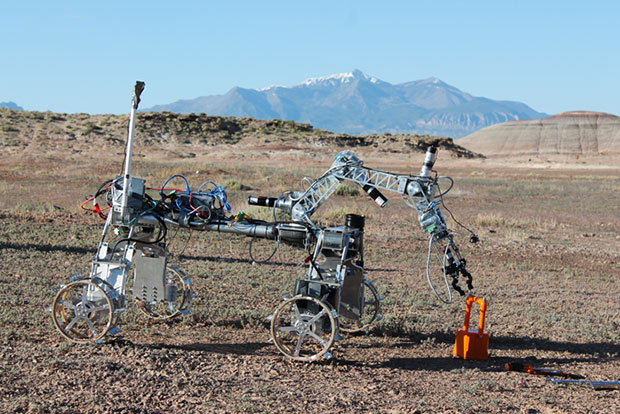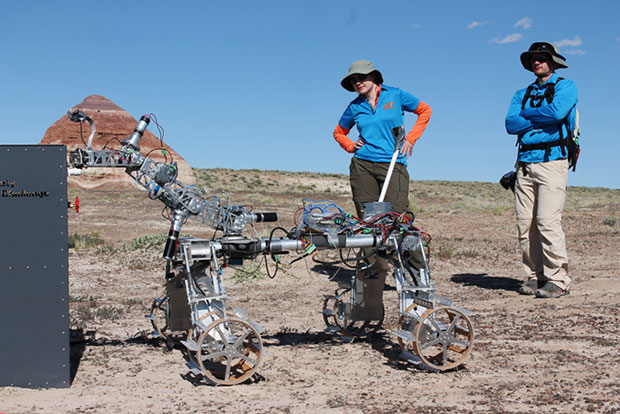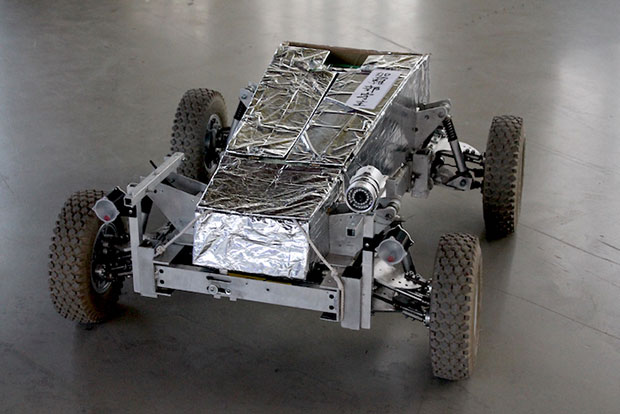
Latest News
May 1, 2017
Space travel is a topic that has fascinated humanity for hundreds of years. An endless, unexplored expanse that hides countless mysteries is waiting to be explored. Despite the fact that the first manned space flight occurred more than half a century ago, humanity hasn’t been able to travel further than the moon. Voyager 1 was the world’s first terrestrial object to cross the heliopause border (a border used to define interstellar space, where the sun’s gravity no longer remains dominant) and travel into interstellar space. To this day, it is the farthest operational object sent into space from Earth. Before humanity can get to where it has managed to send its technological constructions, we must first travel to the neighboring planets in our very own solar system.
Humanity’s Conquest of Red Planet
Along with the start of the 21st century, it has become more and more common to hear proposed plans and possible deadlines for a manned space mission to Mars. There have been 38 attempts to send unmanned probes to Mars to date. The Mars rover Curiosity landed on the Red Planet’s Gale crater on the Aug. 6, 2012, as a successor of the Spirit and Opportunity space rovers. Curiosity is powered by a radioisotope thermoelectric generator, weighs 899 kg and has a guaranteed operational period of 1 Martian year (98 weeks).
Every single kilogram sent into space requires immense amounts of energy, and even the slightest flaws or inadequacies could result in the failure of an entire mission. 3D printing technology opens up a vast array of possibilities for astronautics research and work. The various properties of 3D printing materials can be used to create functional elements for both the interior and exterior parts of a space station. In precision-dependant situations, 3D printers prove to be the best and most cost-effective solutions (Poland’s Zortrax M200 3D printers are capable of accurate printing within a 0.1-0.4 mm range).
Poland Joins Space Race
The Mars rover Ares 2 (the successor of the Ares 1) is a four-wheeled space rover capable of independently exploring the surface of the Red Planet. It was constructed by a group of students from Warsaw’s University of Technology who were a part of a Student Astronomical Study Group. The vehicle has competed with other prototypes created by some of the largest technological universities in the world, taking part in such prestigious competitions as the University Rover Challenge. Polish teams have been successfully taking part in such competitions for years, often being some of the best competitors. Out of a list of the world’s top 10 teams in 2015, 3 were from Poland. Students from the Warsaw University of Technology have been using Zortrax’s M200 3D printers to design and print the necessary components for their space rover. They printed out such fundamental parts as the rover’s wheels and a housing for its ultrasonic sensor. Using Zortrax’s Z-ULTRAT printing materials resulted in a significantly reduced weight of the final project; a factor of great importance when considering the costs of an entire space mission. Components such as the rover’s gripper, which traditionally weighed 33 grams, had its weight reduced down to 10 grams after it was printed using 3D printing technology.
This isn’t the only space-related project which involves students from Warsaw’s universities. Balloon and Rocket Student Groups often send their vessels up into the stratosphere using aircraft, which have been designed and printed on Zortrax’s M200 3D printers. The Balloon Student Group carried out successful flights at an altitude of 30 kilometers. Such flights allowed for the conduction of many scientific experiments aimed at researching the properties of the Earth’s atmosphere. They conducted research on the Earth’s electric field, the atmosphere’s heat transfer properties, the creation and propagation of electromagnetic waves and examined micrometeorites. The final experiment was developed into an experimental program under the name Balloon micro LifeForm-and-Meteorite Assembler (Bulma). The project was invited to the 2014 Selection Workshop, an international REXUS/BEXUS campaign organized by German, Swedish and European space agencies.
3D Printing Technology to Conquer Space
The Automatic Martian Research Vehicle—Scarab—has had three different housings since its creation back in 2009. Thanks to today’s easily accessible 3D printing solutions, students from the University of Technology have printed out a completely new, durable upper housing for the vehicle. This project was carried out in cooperation with the faculty of design at the Academy of Fine Arts, which was responsible for designing the vehicles new upper housing. The entire project was grouped ergonomically and technologically so that it could be easily printed out using Zortrax’s 3D printers. Students were able to print out such components as a new battery, lights and an entire control system.
“Thanks to the advancement of 3D printing technology, we are able to easily create components/objects with very complex geometrical shapes, such as a new housing for the Scarab, which was designed by the Academy of Fine Arts,” says Tomasz Miś, vice president of the Student Astronomical Study Group at Warsaw’s University of Technology.
“We can effectively reduce the weight of each component through the precise manipulation of each part’s cross sectional filling,” he adds. “This is a very important factor in competitions and means of transport; as they often require low weights of such vehicles. For this very reason, we specifically 3D printed the wheels for the Ares 2 rover; a move which got a lot of positive feedback from experts. Thanks to 3D printing technology, we can implement Rapid Prototyping into our projects; we can quickly produce a specific part or component in order to check whether it has been correctly designed. 3D printing also allows us to produce replacement parts rapidly and relatively cheaply.”
Since its founding moment, Zortrax has placed a great emphasis on cooperating with Poland’s research centers and universities. For many years now, numerous projects have been developed and research has been conducted in medical, astronautical and automotive fields thanks to the company’s 3D printers. The Student Astronomical Study Group will present their projects at this year’s U.S. University Rover Challenge yet again. Relying on their experience, they have decided to make use of Zortrax’s 3D printing technology once again.
More info: Zortrax
Subscribe to our FREE magazine, FREE email newsletters or both!
Latest News
About the Author
DE’s editors contribute news and new product announcements to Digital Engineering.
Press releases may be sent to them via [email protected].









